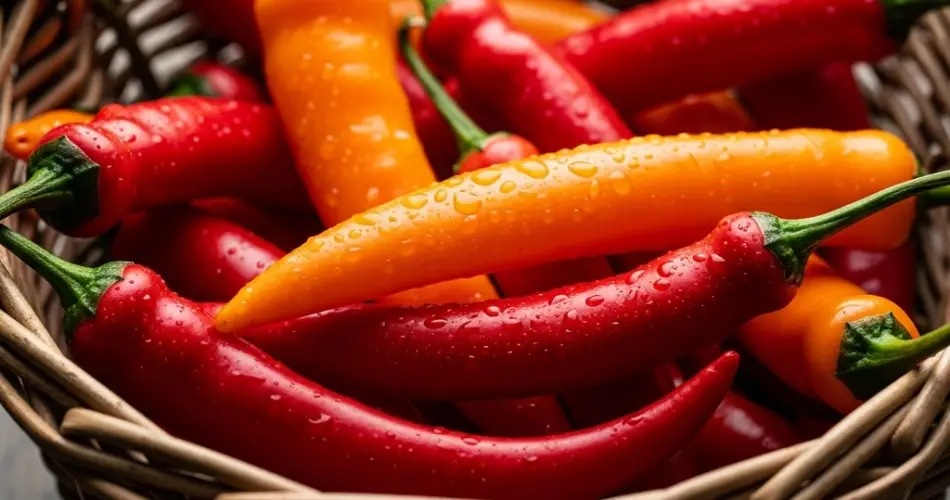Chili peppers are a versatile and rewarding crop to grow in your home garden. Whether you prefer the fiery heat of hot varieties or the subtle spice of mild ones, growing your own chilis allows you to enjoy fresh, flavorful peppers straight from the plant. With a little planning and care, you can cultivate a healthy and productive chili pepper garden in your backyard, on a balcony, or even in containers.
Choosing the Right Chili Varieties
Before planting, decide what type of chili peppers you want to grow. Mild chili varieties include banana peppers, poblano, Anaheim, and sweet chili peppers. Hot varieties range from jalapeños and cayenne to the fiery habanero and ghost peppers. Consider your taste preference, climate, and available space. If you’re new to growing chilis, start with easier varieties like jalapeños or banana peppers, which are more forgiving and thrive in a variety of conditions.
Starting Chili Peppers from Seeds
Chili peppers can be grown from seeds or seedlings. Starting from seeds gives you more variety choices and is cost-effective. Sow chili seeds indoors 8 to 10 weeks before your last expected frost. Use seed trays or small pots filled with a seed-starting mix. Plant seeds about 1/4 inch deep, and keep the soil moist but not soggy.
Chili seeds germinate best in warm conditions. Maintain a temperature of around 25–30°C (77–86°F) to encourage faster sprouting. A heat mat can be useful for this. Seeds usually germinate within 7 to 14 days. Once the seedlings have developed two to four true leaves, transplant them into slightly larger containers to continue growing indoors.
Transplanting Outdoors
Chili plants should only be moved outdoors when the weather is consistently warm—ideally when nighttime temperatures stay above 15°C (59°F). Choose a sunny location with well-draining soil. Chilis thrive in full sun, requiring at least 6 to 8 hours of sunlight per day. Prepare the soil by mixing in compost or aged manure to improve fertility and structure.
When transplanting, space plants about 18 to 24 inches apart to allow good airflow and room for growth. Water the plants well after transplanting to help them settle into their new environment.
Watering and Fertilizing
Consistent watering is essential for healthy chili plants. Keep the soil evenly moist but avoid waterlogging, which can lead to root rot. As the plants mature and begin to flower, reduce watering slightly to encourage fruit production. Water early in the day to allow the foliage to dry before evening, reducing the risk of fungal issues.
Fertilize chili plants every two to three weeks with a balanced liquid fertilizer or one high in potassium once flowering begins. Avoid over-fertilizing with nitrogen-rich fertilizers, as this can lead to lush foliage but fewer fruits.
Supporting the Plants
Some chili varieties, especially those that grow tall or produce heavy fruits, benefit from support. Use small stakes or cages to prevent the plants from bending or breaking under the weight of the peppers. This is particularly important for hot varieties that produce in large quantities.
Pest and Disease Management
Chili peppers are relatively hardy, but they can still fall prey to pests like aphids, whiteflies, and spider mites. Regularly inspect your plants for signs of pests, and remove them by hand or use insecticidal soap if needed. Keeping your garden clean and free of weeds can also help minimize pest problems.
Fungal diseases such as powdery mildew or blight may occur, especially in humid conditions. Ensure good air circulation by not overcrowding plants and watering at the base rather than overhead.
Harvesting Chilis
Chili peppers can be harvested at different stages, depending on the variety and your flavor preferences. Most peppers start green and gradually change color as they ripen—often to red, yellow, or orange. Hot peppers typically increase in heat the longer they remain on the plant.
Use scissors or garden shears to harvest peppers to avoid damaging the plant. Wear gloves when handling hot peppers, especially when harvesting and cutting them, as the oils can irritate the skin.
Growing in Containers
If you’re short on space, chilis grow very well in containers. Choose pots that are at least 12 inches deep and wide, with good drainage holes. Container-grown chilis may need more frequent watering and feeding, but they can produce just as well as those in garden beds.
Place containers in a sunny spot and rotate them occasionally to ensure even exposure to light. Compact chili varieties like Thai chilis or dwarf cayenne are particularly well-suited for pot cultivation.
Conclusion
Growing hot and mild chilis in your garden is both fun and fruitful. With the right care—from selecting suitable varieties to ensuring proper light, water, and nutrients—you can enjoy a bountiful harvest of peppers throughout the growing season. Whether you’re making spicy sauces or adding a gentle kick to your meals, homegrown chilis bring fresh flavor and vibrant color to your kitchen.



